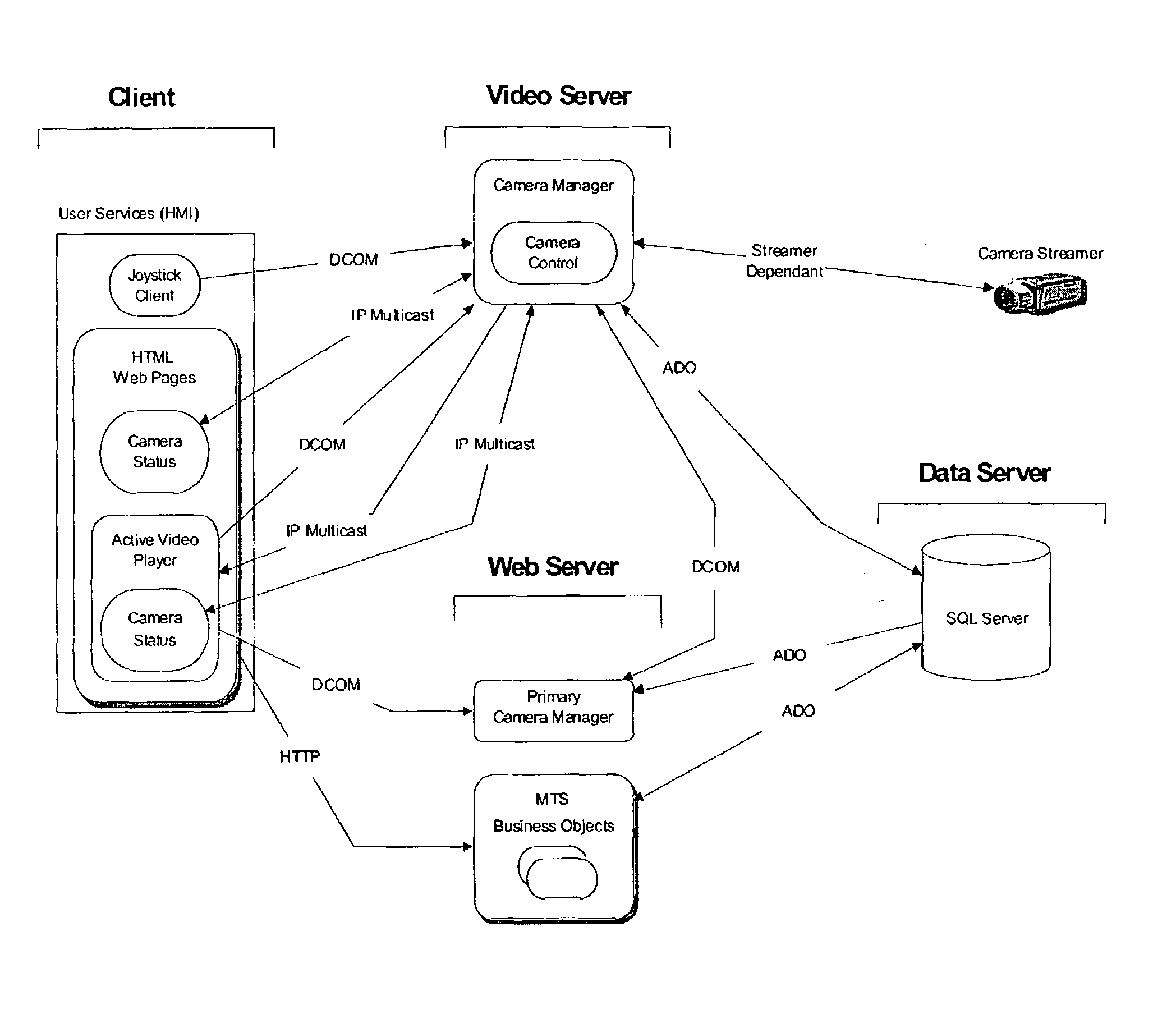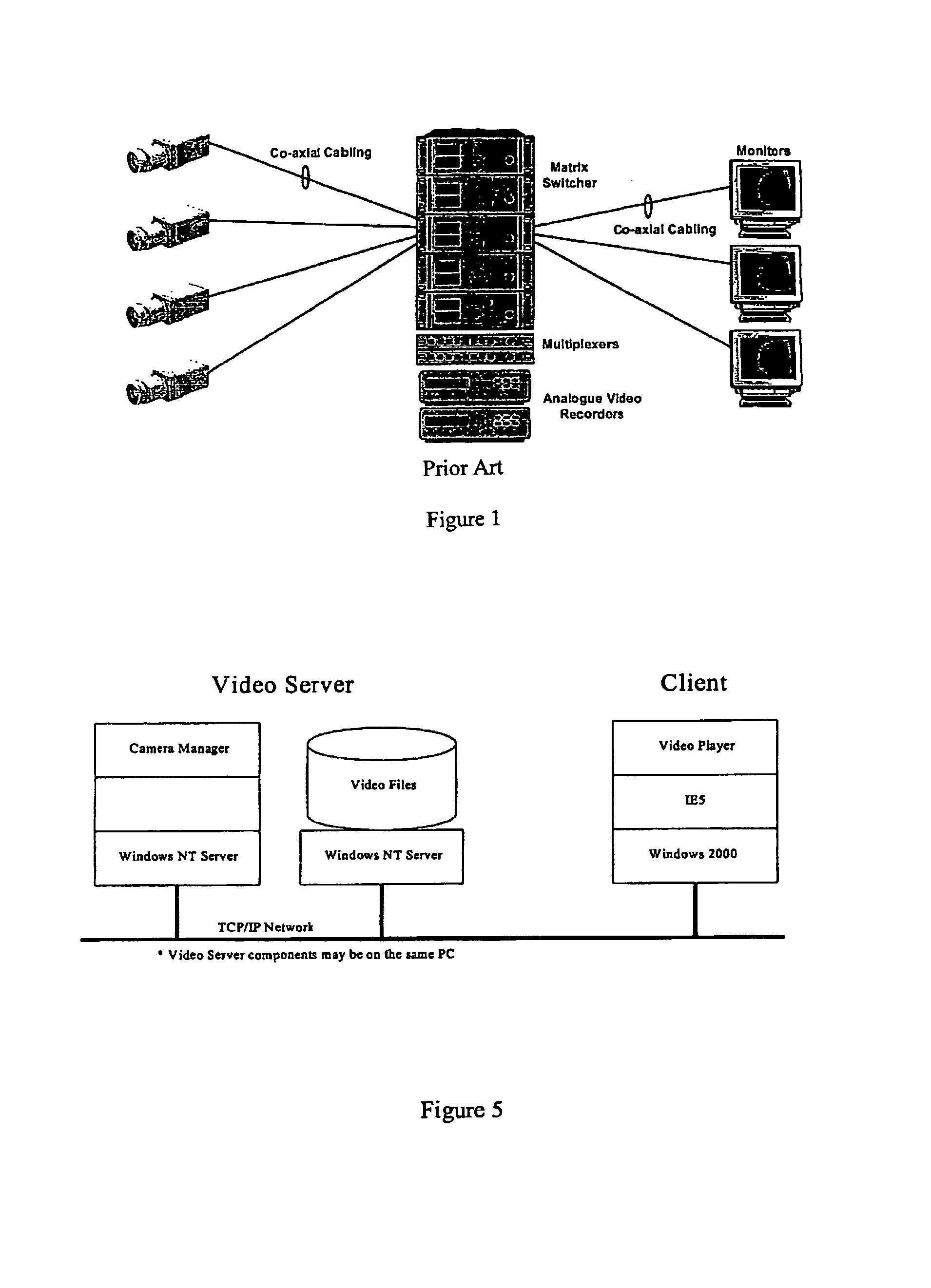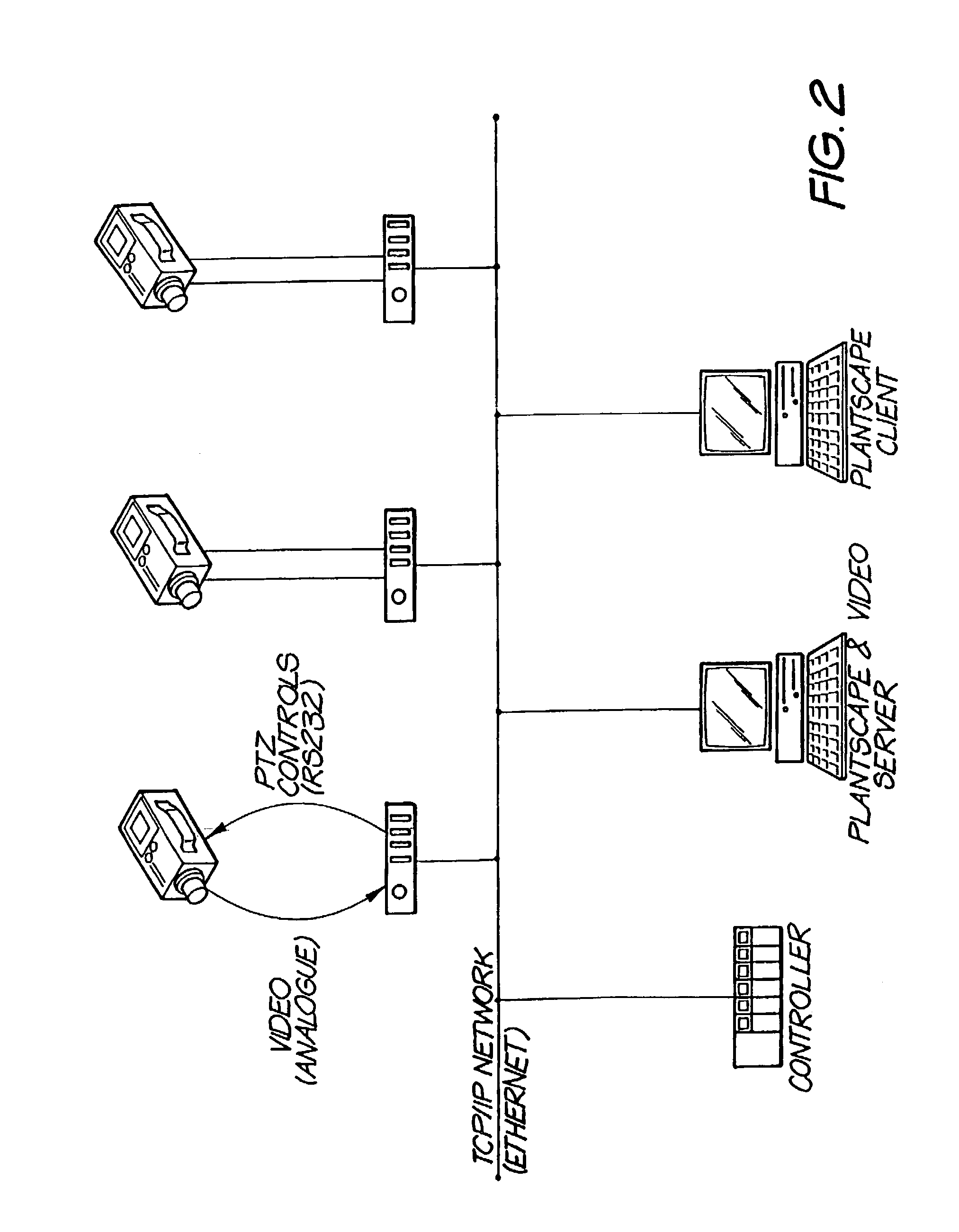Due to the relatively limited bandwidth presently available to most users of
the internet, these broadcast systems rely strongly on the use of high level compression algorithms.
Currently, these highly visually intensive applications utilise analog, full bandwidth video and, as required, audio.
Unfortunately, archiving of video-taped data in this way is unappealing because it requires an entire dedicated
analog recording and
replay system for multiple channels of video.
Moreover, location and replay of a particular time or event associated with one or more cameras can be inconvenient due to the need to retrieve specific tapes and to fast forward and rewind the tapes manually to locate a particular entry points.
In addition traditional CCTV systems rely on large, expensive matrix switchers connected via expensive video cabling to bring CCTV monitoring to operators.
These systems have been largely inflexible because installing and commissioning a new camera or operator monitor is expensive,
time consuming, and can involve significant construction works.
A significant constraint of the traditional CCTV
system is the method of recording video to VCR tapes.
The only traditional CCTV solution to this problem was a complex method of switching recording to standby VCRs that resulted in recordings being spread across several tapes.
Firstly, star cabling configuration using
application specific coaxial cabling. This is inherently inflexible and costly in that if an additional camera or monitor is required, a dedicated cable needs to be installed that connects back to the matrix switcher.
Secondly, significant hardware real estate is required for such matrix switcher equipment.
Thirdly, such architectures provide limited recording capability which is restricted by the length of VHS tape. By way of example, a typical recording configuration would be to connect 16 cameras to a
multiplexer, which in turn is connected to a video recorder that records in time lapse mode for 24 hours.
Fourthly, cameras cannot be individually configured with different recording frame rates.
This of course means either adding further VCRs (with a consequent increase in multiplexers, cost and
control room real estate) or increasing the frequency of tape changes (which creates more labour for those responsible and an increase in storage space required.
Sixthly, recording and playback of a tape cannot be done simultaneously.
Moreover, internet streaming
video transmission standards usually emphasise coherency of sound at the expense of video coherence, since humans are more susceptible to
information loss through interrupted speech than the loss of a few frames from
full motion video.
If several frames have been dropped to cope with relatively low available bandwidth, then the crime can be missed.
This makes NetShow, and RealVideo and similar products designed for
internet video streaming unsuitable to the security and
process control markets.
Another issue is that internet
broadcasting of live events does not need to be absolutely live.
In particular, the audience will not be aware if an event has been delayed by a few seconds.
It will be appreciated that any
delay between the event occurring and the corresponding video reaching the operator controlling the event can be dangerous.
Delays of several seconds in this situation are unacceptable.
Firstly, it provides tight integration with Honeywell's Enterprise Buildings
Integrator (EBI)
software to provide significant ease-of-use. The ability to view live and recorded video from the same operator stations as used for the
security management, including new and future stations is a significant
advantage. The ability to use any event in the
system as a trigger for
video recording provides you with the ultimate in flexibility and the association of video to system alarms makes it relatively simple for the user to investigate incidents.
Secondly, it is flexible. Because the present invention transmits compressed video signals via the network it easy to move existing cameras and install new cameras. New CCTV monitors only require a PC with suitable
software and a
network connection.
Thirdly, it is cost-effective. By utilising
industry standard TCP / IP networking, the present invention can share network structures with other corporate groups thus significantly reducing the ongoing cost of CCTV system support. This also means that the cost of adding or relocating cameras is greatly reduced since access to a
network connection is generally far easier than having to install dedicated cabling back to a matrix switcher. Further, the present invention works with standard, open, PC and network components and so allows customers to choose their desired components. And since pan / tilt /
zoom (PTZ) control can be performed from EBI, no costly matrix switcher is required.
Fourthly, the system is open. The present invention uses non-proprietary hardware to create an open surveillance system. This openness means that a user's initial investment is protected and that the system can be cost effectively expanded at a later date to easily
handle additional cameras, incorporate new technology, or to
handle changes in building use or configuration.
Fifthly, it is scalable. Because of it's revolutionary architecture, the present invention is capable of supporting both small and large installations of CCTV cameras.
This means that the playback speed of incidents tends to vary based on how busy the recording
machine is.
 Login to View More
Login to View More  Login to View More
Login to View More 


